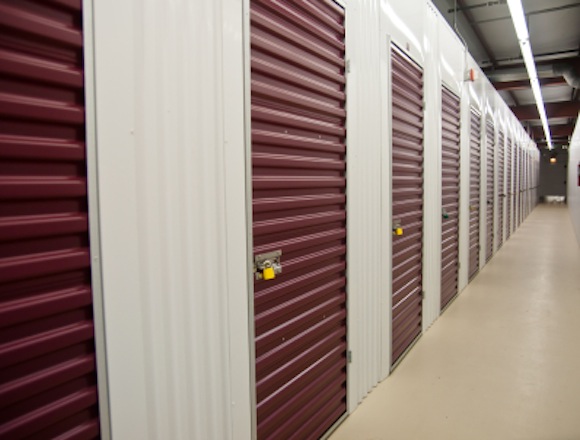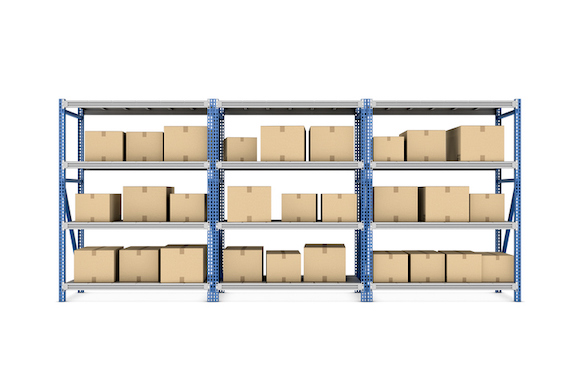An empty storage unit is full of possibilities. Like an empty closet or room in your house, planning and determination can make your storage unit an organized space for keeping items you need–and not just a messy depository of assorted junk.
If you plan to frequently access your storage unit, organizing your contents in a systematic way is even more important. The last thing you want to do is rummage through a dozen boxes before you find what you are looking for. With a little bit of thought and planning, you can provide easy access to any of the items that you decide to keep in your storage space.
The storage tips below will help you with organizing your self-storage unit efficiently so when it comes time to pull out those holiday decorations, you’ll know right where to find them.
1. Sweep Your Unit Before Move-in
A clean space sets the tone for a neat and orderly layout. Treat your storage unit like you would a closet at home, which you wouldn’t want littered with debris from the outdoors or a previous tenant.
2. Label Everything
This is key for quick identification of what’s inside those boxes. Use a fresh black permanent marker so labels won’t fade away, and be sure to write legibly. Ideally, use white label stickers instead of writing directly on boxes.
Another method is label each box with a box number. Keep a list or spreadsheet of box numbers and the corresponding items inside. That way when you need to find your ski boots you can easily check your list and see which box or bin you packed them in by number.
3. Make a Master List
However you choose to label your boxes, it is imperative to keep a master list of everything you put in storage–including seasonal items and furniture. You know the saying “out of sight out of mind”? It is easy to forget what you have stashed away if you don’t write it down.
4. Create a Photo Inventory
If you are loathe to actually write things down, a photo inventory is a great alternative. It will prove useful when you find yourself wondering, “Where the heck is Uncle Julio’s antique accordion?” and can quickly confirm it’s at the storage facility.
Take a picture of each box or bin before you seal it shut. Keep all of the photos in a folder on your phone or desk top. Put the box number in the title of the image so you always know what is where.
5. Pick the Right Storage Unit Size
If you are using self-storage as just a temporary place for your household contents between moves, then it makes sense to get a storage unit just big enough to hold everything. But if you plan to use your unit as an extension of your home, then you’ll need a larger unit. This will allow you to lay things out in a more functional and accessible way, instead of fitting everything together like a game of real life Tetris.
Consult a self-storage size guide to see what would hold everything you plan to store, and then pick the next size up so that you have room to move about and retrieve items easily as the need arises.
6. Place the Things You Might Need Access to in the Front
Take a few moments to plot the layout of your storage unit, considering which items you think you’ll need frequent access to. It will make future visits to your unit quick and easy. Pro tip: It might help to draw a map of your storage unit and mark down where you will place everything.
7. Clear a Path
Items that you’ll need the least can go in towards the back, but it is a good idea to create an aisle or two so that you can access everything in your unit at anytime!
8. Place Your Heaviest Items at the Bottom
Sounds like a no-brainer, but it is important to keep heavy items on the bottom when you stack boxes, if you want to avoid getting crushed under an avalanche of your belongings. Don’t throw things in your unit without a plan in mind. Unbalanced stacks can cause havoc down the line.
Also remember to stack small boxes on top of small boxes, and large boxes on top of larger boxes. Smaller items and breakables should always be kept at the top layer of any stack to avoid getting crushed or causing an imbalance.
9. Use Plastic Containers in Order to Avoid Mold and Mildew
Plastic bins will protect against these perils better than cardboard when it comes to long-term storage. Not to mention they make it much less of a hassle to retrieve the items inside. Plus many are clear so you can easily see what is inside without unstacking them.
Also consider adding a moisture absorber, such as silica gel packets, for additional protection. If there is any chance of flooding, you might consider placing your boxes on wooden pallets to elevate them off the floor.
10. Use Shelving
If you really want to make the most of your storage space, the addition of some freestanding shelving can really help you organize your storage unit better. With shelving you can strategically place the items that you need regular access to, even if they are heavy. That way you don’t have to dislodge a whole stack of boxes to get to something you need that is on the bottom.





